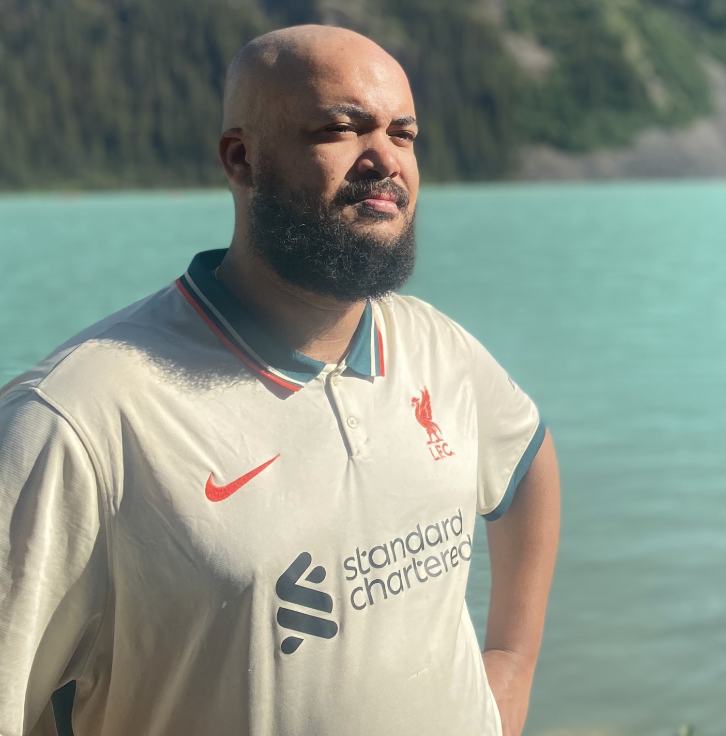
By Brendan O’Meara
Sean Enfield (@seanseanclan) is the author of Holy American Burnout (Split/Lip Press), a fine essay collection that pushes the boundaries of form and is a cross-section of teaching, music, race, and a whole lot more.
Sean is an educator, a bassist, a poet, an essayist, and a whole lot more.
In this conversation, we talk about how Sean hates the word burnout, how he encourages his students to be creative kleptomaniacs, and a whole lot more.
As you know, social media is meaningless so sign up for my Up-to-11 Newsletter. Signup form is below you and to your right. Book recs, book raffles, cool stuff curated by me for you, fun and entertaining. First of the month, no spam, can’t beat it!
Consider supporting the show via Patreon patreon.com/cnfpod. Shop around if you want to support the community. Some great face-to-face perks for the Patreon Gang.
Free ways to support the show?
Subscribe and download and share across your socials. And don’t forget to consider leaving a kind review on Apple Podcasts. Those go a LONG way.
TL;DL: On Hating Burnout (TK)
Parting Shot: On Interviewing
This was a weird confluence of things. After interviewing ESPN’s great investigative reporter Seth Wickersham (it’ll run later in the year) he brought up this interviewing expert named John Sawartsky, who ran a five-day seminar at ESPN about being better interviewers. It was ostensibly for the TV talent, but the print guys got something out of it, too.
Then Dan Patrick, a former SportsCenter anchor for ESPN, brought up Sawartsky on his show a week ago and I was like, OK, I need to study this guy, because my interviewing could use a tune up.
The crux of it is this: open, neutral, lean questions are the best. Open ended, questions without bias or leading the source or guest, and lean meaning don’t be verbose and weigh down your question.
At times, I can be verbose, but it’s usually in the spirit of providing some context to the question, or being relatable to make someone feel comfortable opening up. I should also add that a podcast like mine isn’t exactly journalism. It’s a cousin to it, but, IMO, the podcast sphere is chock full of people who don’t know how to ask questions. The major crime is they don’t want to sound like they don’t know something, so in that insecurity, they basically answer their own question for their guest.
The best way to achieve a great sense of open, neutral, and lean questions is to be asking whats, whys, and hows, though I’d caution the use of “why” questions because, poorly framed, they can sound judgemental.
I talk of having a good shot clock, meaning good questions are framed in under 30 seconds, great questions are typically framed in under 15 seconds. Short questions, clear questions, tend to give you fruitful, thoughtful answers.
I typically work from a list of questions much like a head football coach uses a call sheet for different situations based on a game plan. But the game always changes, so you have ways to pivot and move with the flow of the game.
I’m looking forward to employing a different kind of template to make my podcast itnerviews, and certainly my more journalistic ones, tighter. I have a sheet of paper with three columns: WHAT, HOW, AND WHY.
Under each of those subheads are a list of questions using these open-ended prompts. This way, I’m always thinking in terms of open ended questions. You can’t ask a yes or no question and rely on the generosity of the guest or source to expand.
It takes a greater sense of assuredness on the part of the interviewer. Asking lean questions means swallowing your ego. Your job isn’t to make yourself sound smart to the source or guest, it’s to get useful information from the person across the table. Sawartsky said in an American Journalism Review article from 2000, and I’ll link up to this in the show notes and also in October’s rager:
The best questions, argues Sawartsky, are like clean windows. “A clean window gives a perfect view. When we ask a question, we want to get a window into the source. When you put values in your questions, it’s like putting dirt on the window. It obscures the view of the lake beyond. People shouldn’t notice the question in an interview, just like they shouldn’t notice the window. They should be looking at the lake.”
I’m eager to get leaner in this regard and not rely on the edit to cut me down. Also, I’d love to fit the same amount of goodness into 45 minutes that I typically get from 60 minutes. That way, with intro and parting shot, maybe I can keep these to 55-60 minutes. That’s a much more attractive and approachable podcast length. North of an hour, you lose me, that’s for sure. These guys that go two hours or longer, who has the bandwidth for that? I know I don’t.
So stay wild CNFers, and if you can’t do, interview, see ya!
